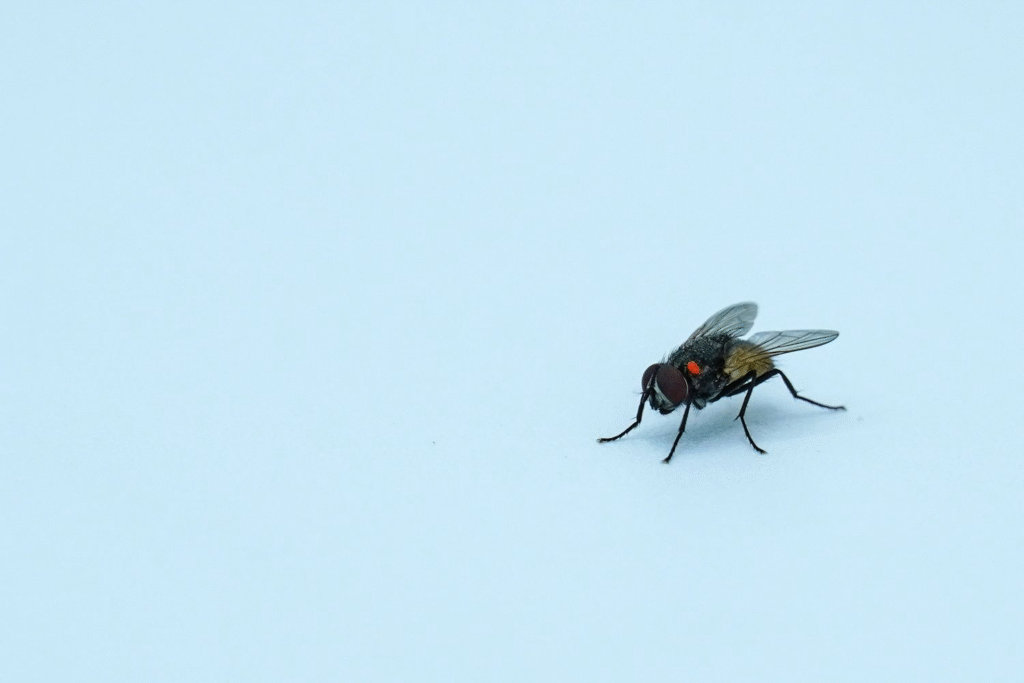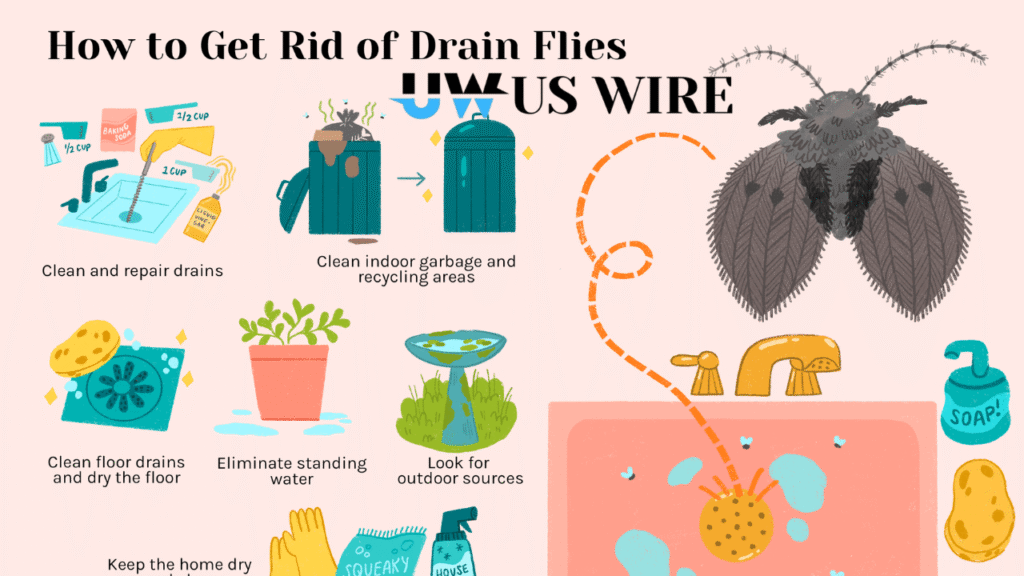If you’ve ever had a fly buzzing around your kitchen, you know just how annoying it can be. Sometimes, it feels like no matter what you do, you just can’t catch it. Many people in the United States search for how to kill a fly, not just to end the annoyance but also to keep their home clean and safe. In this guide, we’ll explore everything you need to know—why flies come inside, how to get rid of them, and how to stop them from coming back. Let’s keep it simple, safe, and effective.
Why Do Flies Come Inside the House?
Flies enter homes for two main reasons: food and shelter. Your kitchen, trash can, and dirty dishes are like a buffet for flies. They are attracted to smells from leftover food, sweet drinks, garbage, pet waste, and even fruit on the counter. In warmer months, open windows and doors give them an easy way in, especially if there are no screens. Flies are also drawn to moisture and heat, which is why they love hanging out near drains, compost bins, and warm lights.
Sometimes, even if you keep a clean home, just one tiny opening—like a cracked window or a torn screen—can invite flies inside. Once they find a cozy, food-rich environment, they can multiply quickly. That’s why it’s important to act fast and know how to kill a fly before a small problem turns into a swarm.
What’s the Best Way to Kill a Fly?
The best way to kill a fly depends on what’s easiest, safest, and most effective for you. Some people prefer the old-fashioned fly swatter, while others use chemical sprays, fly traps, or even natural home remedies. In reality, there’s no one-size-fits-all answer, but the best method is the one that works fast, keeps your home clean, and doesn’t expose your family or pets to harmful chemicals.
Some people like using fly sprays because they can cover a wide area. Others avoid chemicals altogether and go for DIY traps made with sugar water or apple cider vinegar. Swatting is quick if you have fast reflexes, while sticky traps can work passively around the clock. Whatever method you choose, make sure you also take steps to keep flies from coming back—because getting rid of one fly today doesn’t help if ten more show up tomorrow.
Easy Ways to Get Rid of a Fly
There are many easy and proven ways to kill or remove flies from your home. Here are the most common methods people use across the United States:

Use a Fly Swatter
A fly swatter is probably the most classic way to kill a fly. It’s cheap, easy to use, and doesn’t involve any chemicals. Flies have fast reaction times, so to succeed, move slowly and wait until the fly lands. Then strike quickly with a firm but not too hard motion. You don’t want to leave a mess or damage surfaces.
Fly swatters now come in different forms—some are manual, while others are electric fly swatters that zap the insect instantly. These electric versions are very effective and safer than bug zappers because you can aim them directly without worrying about attracting other insects.
Try Fly Spray
If you’re dealing with multiple flies, a fly spray can help get rid of them fast. Most sprays are made with insecticides that kill flies on contact. When using a spray indoors, make sure to read the label and keep it away from food, pets, and kids. Spray around windows, garbage bins, and other common fly zones.
There are also natural fly sprays made with essential oils like peppermint, eucalyptus, or lemongrass. These are safer for use around the house and still keep flies at bay. Just remember that natural sprays may need to be used more often to be fully effective.
Set a Fly Trap
Fly traps are an excellent way to catch flies without spraying or swatting. There are many kinds:
- Sticky traps: These are tape-like strips with sticky surfaces that catch flies when they land.
- Bottle traps: You can make one at home by filling a jar with sugar water, vinegar, or soda, and covering it with plastic wrap with small holes. Flies go in but can’t get out.
- Electric traps: These attract flies using light and kill them with a quick zap.
Fly traps are a great long-term solution if you constantly deal with flies. They’re also a good choice for areas like garages, patios, and basements.
How to Catch a Fly Without Killing It
Sometimes, you don’t want to kill the fly—you just want it gone. Maybe you’re trying to avoid chemicals, or you don’t like the idea of harming insects. In that case, you can catch a fly without killing it using a simple glass-and-paper trick. Here’s how:
Wait for the fly to land on a window or surface. Then, slowly place a glass over the fly. Once it’s trapped inside, carefully slide a piece of stiff paper or cardboard under the glass to seal it. You can now carry the fly outside and release it safely.
This method is safe, quiet, and mess-free, and it works well for just one or two flies. It’s also a great way to teach kids about being gentle with living creatures.
Natural Ways to Keep Flies Away
If you want to avoid chemicals, you’ll be happy to know many natural fly repellents work surprisingly well. One of the best ways is to use herbs and essential oils. Flies hate the smell of basil, mint, lavender, cloves, and eucalyptus. You can grow these herbs near windows or use essential oils in a diffuser to keep flies from coming inside.
Another option is to make a natural fly spray at home. Mix water with a few drops of peppermint oil and spray it near trash cans, doors, and windows. Flies dislike the strong smell and tend to stay away.
You can also hang a small bag of water with pennies inside near your doors. This old trick is believed to confuse flies’ vision and keep them from entering the area. It may sound strange, but many people swear by it, especially in Southern states where fly season gets intense.
How to Stop Flies from Coming Back
Killing a fly is only half the battle. If you want to stay fly-free, you need to understand how to prevent future flies from invading your home. Here are the most effective things you can do:

Close Windows and Doors
This may sound obvious, but flies need an entry point. Keep doors and windows shut, especially in summer. If you like fresh air, use tight-fitting screens and check them regularly for tears. Screen doors are also a good investment if you spend time going in and out frequently.
Take Out the Trash
Flies are drawn to rotting food and strong smells. Make sure you take out the trash regularly and clean your bins with hot water and soap. If your trash can smells bad, flies will smell it from outside. Always seal garbage bags tightly and keep outdoor bins closed with a lid.
Clean Up Food Right Away
Never leave dirty dishes or open food sitting out. Wipe down counters after cooking, keep fruit in the fridge, and clean pet bowls. Even a sticky juice spill or a forgotten banana can attract a dozen flies overnight. By staying clean, you remove the fly’s reason to visit in the first place.
Are Flies Dangerous?
Yes, flies can be dangerous, especially houseflies. They don’t bite, but they carry bacteria and can spread diseases. Flies often land on garbage, feces, and dead animals, and then walk across your food, your counters, or your skin. This means they can spread germs like E. coli, Salmonella, and other harmful pathogens just by landing.
This is why it’s important to kill flies quickly and take prevention seriously. A single fly may seem harmless, but in reality, it can spread sickness, especially in kitchens, restaurants, or homes with small children.
Final Thoughts
Learning how to kill a fly is more than just stopping an annoying buzz. It’s about keeping your home clean, safe, and comfortable. Whether you choose to swat, spray, trap, or release the fly gently outside, the most important thing is to act quickly and clean up afterward. Prevention is key—if you stop flies from entering and remove what attracts them, you’ll rarely have to deal with them at all.
So next time you see a fly buzzing around your room, don’t panic. You’ve got smart, safe, and simple tools to handle it—and now, you know exactly what to do.


